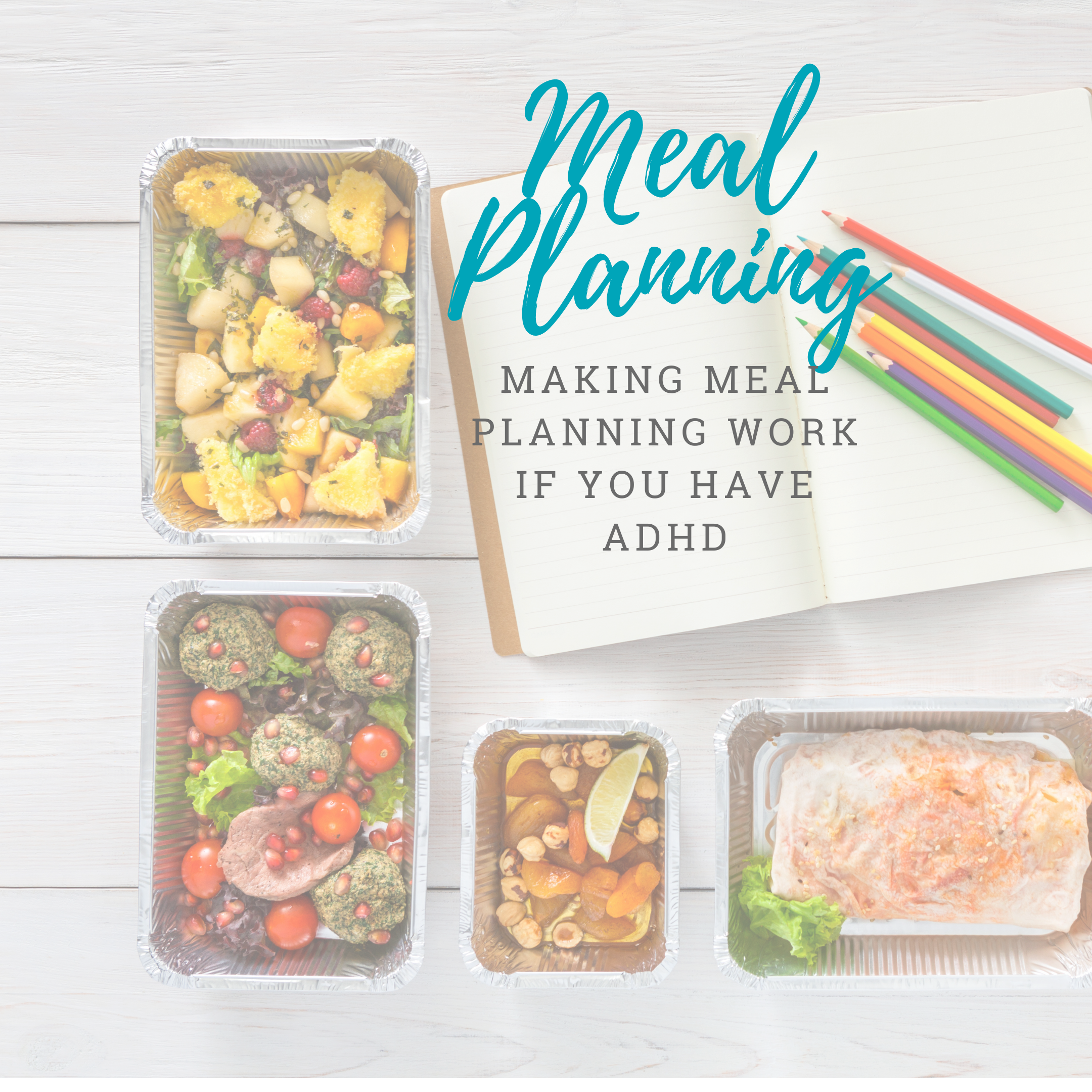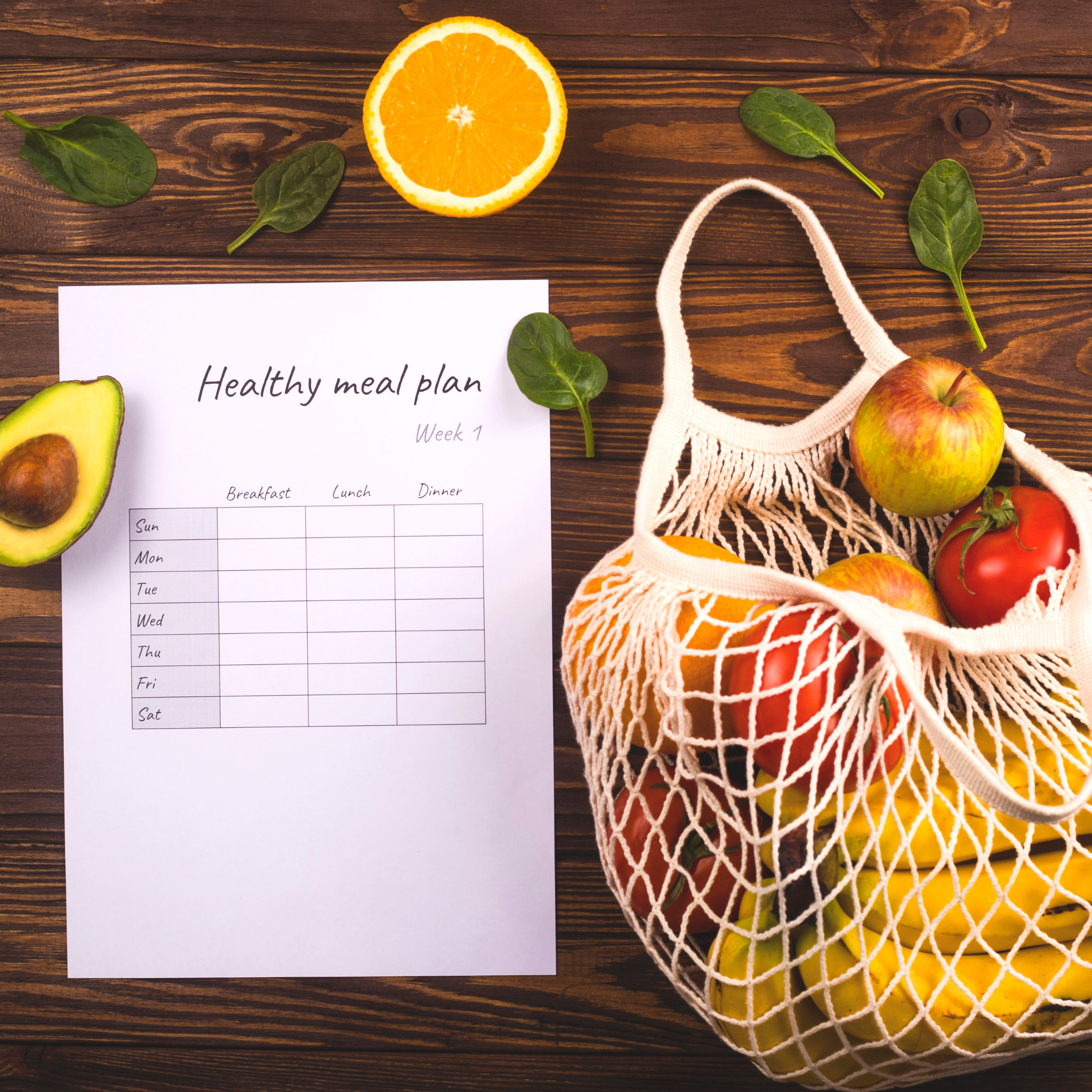
Meal Planning & ADHD: 9 Tips to Make It Work
Planning meals for your family can be stressful — especially if ADHD leads to feeling disorganized and unprepared. Learning how to meal planning can eliminate some stress around mealtimes.
Why Is Meal Planning Hard If You Have ADHD?
Meal planning refers to taking the time to choose your meals for the week. It can also include making your grocery list for the week too. So why is this so difficult if you have ADHD? Meal planning requires decision-making, planning, prioritizing — all of which are executive function skills. Because ADHD can lead to struggles with executive function skills, the struggle makes sense.
In other words, meal planning can be overwhelming and incredibly ADHD-unfriendly. The good news is that meal planning is a skill – and skills can be learned. In this article, we’ll explore the benefits of meal planning as well as 10 tips to make meal planning less overwhelming.
5 Benefits of Meal Planning for Your Family
Meal planning provides many benefits for you and your family. Exploring these benefits can be really motivating to stick with your plan. Think of this as your WHY as you embark on meal planning.
Meal planning can provide the following five benefits:
- Reduces the feelings of overwhelm around planning for meals.
- Helps you eat healthier. Planning ahead gives you a better chance of planning healthier meals.
- Saves you time. Save time by avoiding the need to run to the store multiple times. You’ll also save time each night because you won’t have to think about what to make — you already know.
- Saves you money. You can save money by reducing cutting out impulse buys and by avoiding duplicate purchases. Planning ahead also gives you an opportunity to take advantage of the weekly sales at your grocery store. Planning ahead also helps you stick with your budget.
- Helps you cut back on fast food. We’ve all been there: it’s late and dinner isn’t made yet — so you order take-out. Planning ahead cuts out last minute fast-food choices.
In the next section, we’ll share tips for making meal planning less overwhelming.
9 Strategies for Making Meal Planning Easier
1. Make a Master List of 10 Recipes
A master list of recipes provides quick and easy references to some of your family’s favorite recipes.
Tips for making a master list:
- Include plenty of easy recipes for busy nights (think: Instapot or CrockPot recipes)
- Sort your recipes by category (beef-based, pasta dishes, chicken, side dishes, soups, etc)
- Keep them written down (in a blank journal, on a Word document, or on flashcards in a recipe box organizer)
When meal planning, you can refer to your master list to fill out your weekly meals. You can use as many recipes as you want. You might use meals only from your master list. Or, you can use some from your list and try 1-2 new recipes each week. Do what works for you.
Need inspiration? You get your free ADHD-friendly recipe book here.
2. Don’t Try to Memorize Your Meal Plan
 Trying to memorize your meal plan will increase the risk that you deviate from the plan. You can write your meal plan:
Trying to memorize your meal plan will increase the risk that you deviate from the plan. You can write your meal plan:
- In a daily paper planner
- In an app
- On a dry erase board hanging in your kitchen
Tip: Using the dry erase board in the kitchen might be helpful to make sure your whole family is on the same page. This can limit the “What’s for dinner?” question.
3. Plan All of Your Meals
If you don’t make a plan for breakfast or lunch, you’ll more likely to either skip the meal or grab something quick from a drive-thru.
Include all of your meals when you meal plan. This doesn’t mean that breakfast or lunch has to be elaborate, time-consuming meals, either.
Examples include:
- Hard-boiled eggs and toast and a piece of fruit
- Overnight oats
- Brown bag lunch ideas such as leftover meat from dinner as a sandwich
Even if breakfast and lunch are quick meals, planning for them gives you time to get them ready. For example, if you know you want hard-boiled eggs for breakfast, you can make sure you allot time in the morning to get that done.
4. Check Your Daily Schedule
What if you have to work late on Tuesday? What if the kids have a dance recital on Thursday? Even on the busiest nights, you’ll still need dinner — but by taking your calendar into consideration, you ensure that you’ll have dinner ready.
Tip: You might designate busy nights as the slow-cooker night. You can also designate busy nights as leftover night — just reheat and go!
5. Check Your Pantry
When you’re meal planning, you don’t need to make 7 dinners each night from scratch with a pantry overhaul. You can use what you already have in your pantry to inspire your meals for the week.
For example, if you have a lot of canned tomatoes in your pantry, then plan a spaghetti night. Lots of chicken in your freezer? Try a pulled chicken recipe in your crockpot.
6. Choose In-Season Produce
Plan meals based on what’s in season. For example, planning a berry-based salad in the middle of winter might not lead to the best salad. Out-of-season produce tends to have less flavor and be more expensive.
Tip: If you want a fruit that is out-of-season, try the frozen version.
7. Don’t Forget to Plan for Leftovers
One of the most frustrating things is to end the week with a fridge full of leftovers. Instead, plan for your leftovers. Leftover night can be quite handy on busy nights.
Leftover nights cut down on wasted food, and it also gives you a night off of cooking.
How to make leftover nights not-so-boring:
- Get creative! If you don’t like having the same meal twice, you can repurpose your meals. For example, if you had steak on Monday, use the leftover steak to make steak tacos on Wednesday.
- Leftovers aren’t just for dinner. Make your lunches out of dinner leftovers. For example, if you have leftover roast chicken, you can slice it and top your salad with it.
8. Make Extra and Freeze It
Time-permitting, make a double batch of your favorite recipes. You can eat one batch for dinner, and then freeze the second batch for later. This can come in handy the following week if you need a quick dinner.
What can you freeze? Consider making double batches of meals such as:
- Soups (Lay flat in a Ziploc to freeze; once frozen, you can turn upright and stack soup easier.)
- Chili
- Bolognese sauce
- Waffles
- Meatloaf or salmon loaf
9. Schedule Your Meal Planning Time
The first step to meal planning is actually doing it. Set aside designated time to work on your meal plan in peace. It shouldn’t take more than 30 minutes.
Need More Guidance?
If you’re still feeling overwhelmed with planning and organizing tasks, we can help. Here at Next Step 4 ADHD, we provide comprehensive, multimodal support, including:
- Medication management
- Therapy
- ADHD coaching
- Online courses, including our FREE self-care course which focuses on nutrition
To make an appointment or to learn more, call us at 502-907-5908. You can also request an appointment here.
Related Posts
10 Essential Ways to Prioritize Your Mental Health: A Guide for Mental Health Awareness Month
May is Mental Health Awareness Month -- a time dedicated to raising awareness...
How to Help Your Child with Homework
As a parent of a child with ADHD, you're no stranger to the challenges that come...


